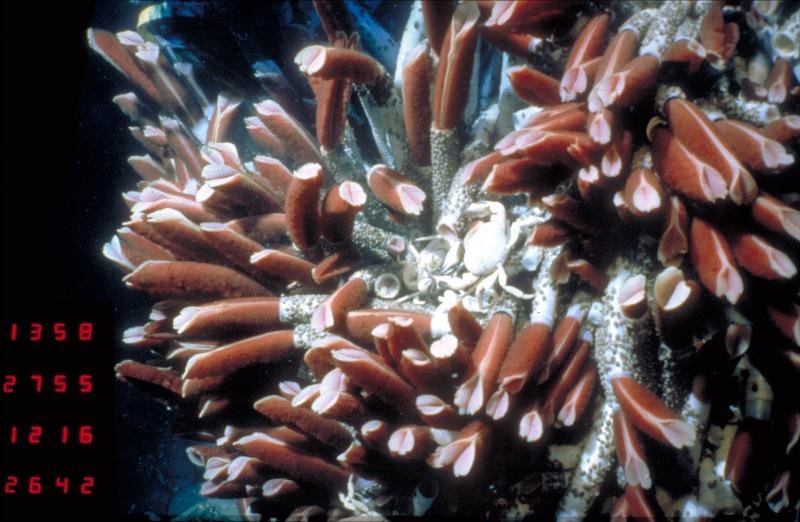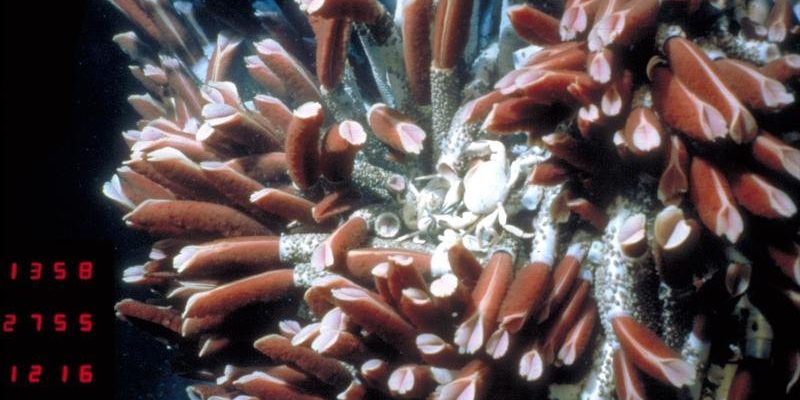
You might be wondering why studying these tube worms is so crucial. Well, Riftia pachyptila plays an essential role in the ecosystem surrounding hydrothermal vents. By understanding their seasonal behavior, researchers can gain insights into the health of these ecosystems. Plus, knowing how they interact with their environments can help us learn about climate change and its impact on marine life. So, grab your snorkeling gear (or just a comfy chair), and let’s take a closer look at the seasonal behavior patterns of Riftia pachyptila!
Understanding Riftia Pachyptila
Riftia pachyptila is a remarkable organism that thrives in the harsh conditions found near hydrothermal vents. Unlike most creatures, these tube worms don’t have mouths. Instead, they rely on symbiotic bacteria that live inside them to convert the chemicals from the vent fluids into food. This relationship is a lot like how some plants depend on sunlight. It’s a complex dance of survival and adaptation. But it’s important to know that their environment is constantly changing, and these changes can influence their behavior and biological rhythms.
These tube worms can grow up to 3 meters (about 10 feet) long, and they live inside protective tubes made of chitin. If you think about it, this is sort of like living in a cozy apartment in a bustling city, where they can stay safe from predators while still having access to the abundant nutrients flowing from the vents. Isn’t that an interesting perspective? Just like you would pick a place to live based on what you need, Riftia pachyptila has chosen its home carefully to maximize its chances of thriving.
Their vibrant red, pink, or white bodies are a sight to behold, but these colors also serve an important purpose. The red plume on their head is rich in hemoglobin, which helps them absorb the hydrogen sulfide from the vent water. This process is vital to their survival and showcases how beautifully evolved these organisms are. So, when we talk about their behavior patterns, we’re not just discussing what they do, but how they do it in relation to their unique adaptations.
Seasonal Changes in Habitat and Temperature
The ocean is a dynamic environment, and seasonal changes play a significant role in the life of Riftia pachyptila. One of the primary factors influencing their behavior is the temperature of the water surrounding them. Hydrothermal vents can vary in temperature, especially during different seasons. In winter, for example, the surrounding water may cool down, which can lead to changes in the chemistry of the vent fluids.
You might be asking, “How does temperature affect these tube worms?” Well, temperature changes can impact the metabolic rates of the bacteria living in their bodies. When it’s cooler, these bacteria might not produce as much energy from the vent chemicals, which can lead to a slower growth rate for the tube worms. It’s like how a cold day can slow us down and make us feel less energetic. They may go into a sort of hibernation mode, conserving energy until conditions improve.
Additionally, during warmer months, the increased activity at hydrothermal vents can lead to spikes in chemical availability. This could stimulate growth and reproduction in Riftia pachyptila. It’s a fascinating cycle of thriving and survival that shows how adaptable these organisms are. Just like planting a garden, they respond to their environment, growing when conditions are right and slowing down when they aren’t.
Reproductive Patterns Throughout the Year
Another interesting aspect of the seasonal behavior of Riftia pachyptila is their reproductive strategies. The timing of reproduction can be heavily influenced by seasonal changes in the availability of resources and environmental conditions. Usually, these tube worms have a specific breeding season that coincides with the time when the nutrient flow from the vents is at its peak.
Let’s think of it this way: many animals choose to have their young when food is plentiful so their offspring have the best chances of survival. For Riftia pachyptila, this means releasing their larvae when conditions are ideal. This usually occurs in late spring to early summer when nutrient availability is high. During this time, their tubes may become filled with larvae, which then disperse into the surrounding waters.
The larvae are free-swimming and must quickly find a suitable habitat, or they risk becoming a meal for other marine creatures. The fact that timing is crucial for their reproductive success highlights how intricately tied their life cycles are to seasonal changes. It’s a delicate dance, where the right timing can make all the difference in ensuring the continuation of their species.
Flow of Nutrients and Energy Transfer
In the deep sea, energy doesn’t flow like it does in forests or on land. Instead, it’s a complex web of interactions that’s particularly evident around hydrothermal vents. The primary source of energy for Riftia pachyptila comes from the chemicals released by these vents. The availability of these chemicals fluctuates not just seasonally but also diurnally, which can influence how these tube worms behave throughout the day.
During periods of increased vent activity, there’s a greater flow of nutrients, allowing the bacteria inside the tube worms to thrive. The enhanced energy production can lead to bursts of growth and a more active state for the Riftia pachyptila. On the flip side, when vent activity slows, the flow of nutrients diminishes, leading to a more sedentary behavior as they conserve energy.
It’s like the difference between a bustling market on a Saturday morning and a quiet grocery store on a Tuesday evening. When the nutrients flow freely, the tube worms are active, growing, and maybe even reproducing. However, when the flow slows down, they might take a step back, focusing on survival rather than growth. Understanding these dynamics is crucial for researchers trying to predict how Riftia pachyptila and similar organisms might respond to changes in their environments.
Predation and Competition: Seasonal Challenges
Just like on land, seasonal changes in the ocean can lead to different challenges for Riftia pachyptila. While they have certain adaptations to help protect them, they’re not entirely immune to predation or competition for resources. During warmer months, when food is abundant, other organisms may also be looking to take advantage of this resource boom.
Increased competition with other tube worms or similar species can lead to struggles for space and nutrients. It’s a bit like a crowded buffet—when everyone is eager for the same dish, tensions can rise! Tube worms may even show changes in behavior as they compete for the best feeding spots around the vents, sometimes moving slightly to access better resources.
Predation also varies with the seasons. Certain fish and other marine creatures may be more active during warmer months, increasing the risk for Riftia pachyptila. During these times, they might rely more heavily on their protective tubes and their unique adaptations to evade predators. The seasonal ebb and flow of predation pressures highlight the resilience and adaptability of these fascinating creatures.
Human Impact on Seasonal Behavior Patterns
As we learn more about Riftia pachyptila’s seasonal behavior patterns, we also see how human activities can influence their habitats. Activities such as deep-sea mining, oil drilling, and climate change are altering the environments where these tube worms thrive. The warming of ocean temperatures can disrupt the delicate balance of life around hydrothermal vents, affecting nutrient flows and overall ecosystem health.
Here’s the thing: when we change the ocean’s temperature or chemistry, we’re not just impacting one species; we’re potentially altering the entire food web. Since Riftia pachyptila plays a critical role in this ecosystem, understanding their behavior patterns can help us gauge the health of hydrothermal vent communities. If these tube worms are struggling, it’s a clear signal that something is off in the ecosystem.
By studying these fascinating organisms, scientists can gather crucial data on how to protect not just Riftia pachyptila, but the broader ecosystems they inhabit. It’s a reminder that even the smallest creatures can have a big impact on ocean health, and their seasonal behavior patterns can tell us a lot about what’s happening below the surface.
Understanding the seasonal behavior patterns of Riftia pachyptila isn’t just about curiosity; it’s about grasping the bigger picture of marine ecology. These tube worms showcase just how intricate and interconnected life can be in the ocean depths. As we’ve seen, their behavior changes with the seasons, influenced by factors like temperature, nutrient flow, and even predation.
By examining these patterns, researchers gain valuable insight into the health of hydrothermal vent ecosystems, which are vital not just for marine life but also for our understanding of climate change and its effects. It’s a beautiful reminder of how everything in nature is connected, with each season bringing its own set of challenges and opportunities for survival.
So next time you think about the ocean, remember those incredible tube worms quietly thriving in their unique world. Their story is one of resilience, adaptation, and the complex interplay of life beneath the waves. In a way, it’s like a hidden treasure trove of knowledge waiting to be explored and understood.

